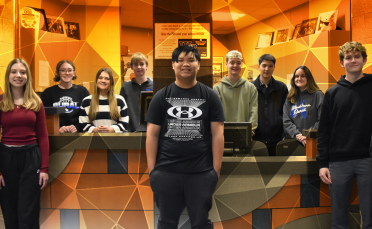Parents and Educators: Spring into New Thinking About Post-Secondary Careers

Spring is the season students often make commitments for their future. Whether that’s enrolling for next year’s classes, choosing a post-secondary institution of higher learning, or submitting job applications and resumes, these deadlines often approach as the flowers bloom.
As you help your children and students make these decisions about their future, I’d like to share four newer ways to think about career training, some of which might differ from the mindset you were raised with.
1. Employers are looking for workers with specific skills.
Gone are the days when college graduates had a leg up simply because they had the right diploma. Now, it’s more important for young people to be able to package and demonstrate to employers what they can do than what academic boxes they’ve managed to check.
The goal for young people preparing to enter the workforce should be to gain a toolbox of specific skills. Employers want to know measurable things that the potential employee can do — things like program in Python, conduct regular maintenance on small engines, take a patient’s vital signs or frame a house. If you can demonstrate legit, marketable skills, then you’ve probably got the know-how to jump into a job.
As we talk to our kids about the future, we need to reframe the conversation. It’s less important to talk about where they want to go to school and what they want to study, and more important to focus on what they want to be able to do after they’re done.
2. Choices made at the age of 18 are not final.
Just because a young person chooses to enter the workforce or takes on an apprenticeship after high school doesn’t mean they won’t someday earn additional training or higher degrees. Getting back in the classroom can always come later — and possibly on an employer’s dime.
Many employers will invest in good people who they want to nurture for the long term. It’s very common, especially in larger companies, for businesses to pay for — or reimburse for — additional training that helps good employees become even better at their jobs. Employers see such programs as a benefit that leads to longevity. After all, employees are much more likely to stay with a company long term that wants to see them grow and succeed.
Sometimes young people need time to gain practical experience and see what being an adult is like before they know what direction they want to go with their lives. Given the high cost of secondary education, it can be very smart to try your hand at doing something before jumping right into more schooling. Getting into the workforce, attempting to become financially independent of your family on a starting salary, and seeing other people on the job can be strong motivating factors in inspiring a young person to put in the work to reach their goals.
3. There are many ways to learn new skills.
Post-secondary education is at a precipice. Given the rise of streaming video, online learning, and a growing willingness of employers to hire people with the right skills over the right degrees, we’re going to see more use of alternative, faster methods of learning to gain career skills. Industry-recognized credentials, certificate programs, bootcamps, apprenticeships, online courses, micro degrees, badges, micro-internships and other forms of short courses and private-training programs can provide someone with a measurable skill in a matter of weeks or months, rather than semesters.
More of these shorter types of training methods are being adopted at technical schools, colleges and universities to compete for students because in this era of instant gratification, people want to have something to show for their efforts quickly. With workers at a premium, employers often appreciate people who have the ambition to find a way to learn what they want to know — quickly.
With these new forms of learning, there are fewer barriers to education than ever before, and if your student is disciplined enough to take a different approach from a traditional educational path, it’s worth a shot. Doing so might save them a lot of time and money, while getting them qualified for a new job or career. More in-depth training can always come later (see #2 above).
4. Hands-on learning is for everyone.
Whether a student is still in high school or has their diploma in hand, they should always seek out hands-on experience in any career field before starting a formal academic program. This is just as true for those with an interest in skilled trades careers as those who dream of more academic, STEAM careers.
Luckily, there are lots of ways someone can get their feet wet in nearly any industry:
- Career and technical education (CTE) courses offered in high school — often for no cost and with college-credit opportunities — give kids the chance to better imagine what it might feel like to do a specific job. Whether that’s shooting video of high school events, learning to administer medication, or operating an arc welder, acquiring such basic skills might ignite a student’s interest and set them on their eventual career path.
- Job shadowing a professional is a great way to see if a job aligns with a kid’s vision of the job itself. Spending a day or two watching a working professional in a field that a young person is interested in can help them confirm this is something they want to learn to do — or let them know they should keep searching for something else that better matches their interests and aptitudes.
- Internships and apprenticeships are great ways to gain some practical experience — and sometimes these experiences come with a paycheck, giving the young person the opportunity to work alongside adults and force them to conform to the expectations of a real workplace. See if your high school or local tech college offers opportunities for academic credit for real-world experience.
- Entry-level jobs in the summers or part-time during the school year will give a young person an inside look at a career field. Many employers can train a high school student or young person to do an entry-level job, while giving the young employee the opportunity to see if they like working in that industry and environment before they enroll in a program of study.
- Sometimes a hands-on experience will fizzle out — meaning the kid discovers they don’t like to do something they thought they wanted to pursue. That’s perfect! It’s much better to learn this now, before sinking thousands of dollars and hours into formal training and later discovering the field isn’t a good match for them. They can always look for another opportunity to try something else! No opportunity for hands-on learning is ever wasted — the outcome just might be different from what your child originally expected.




